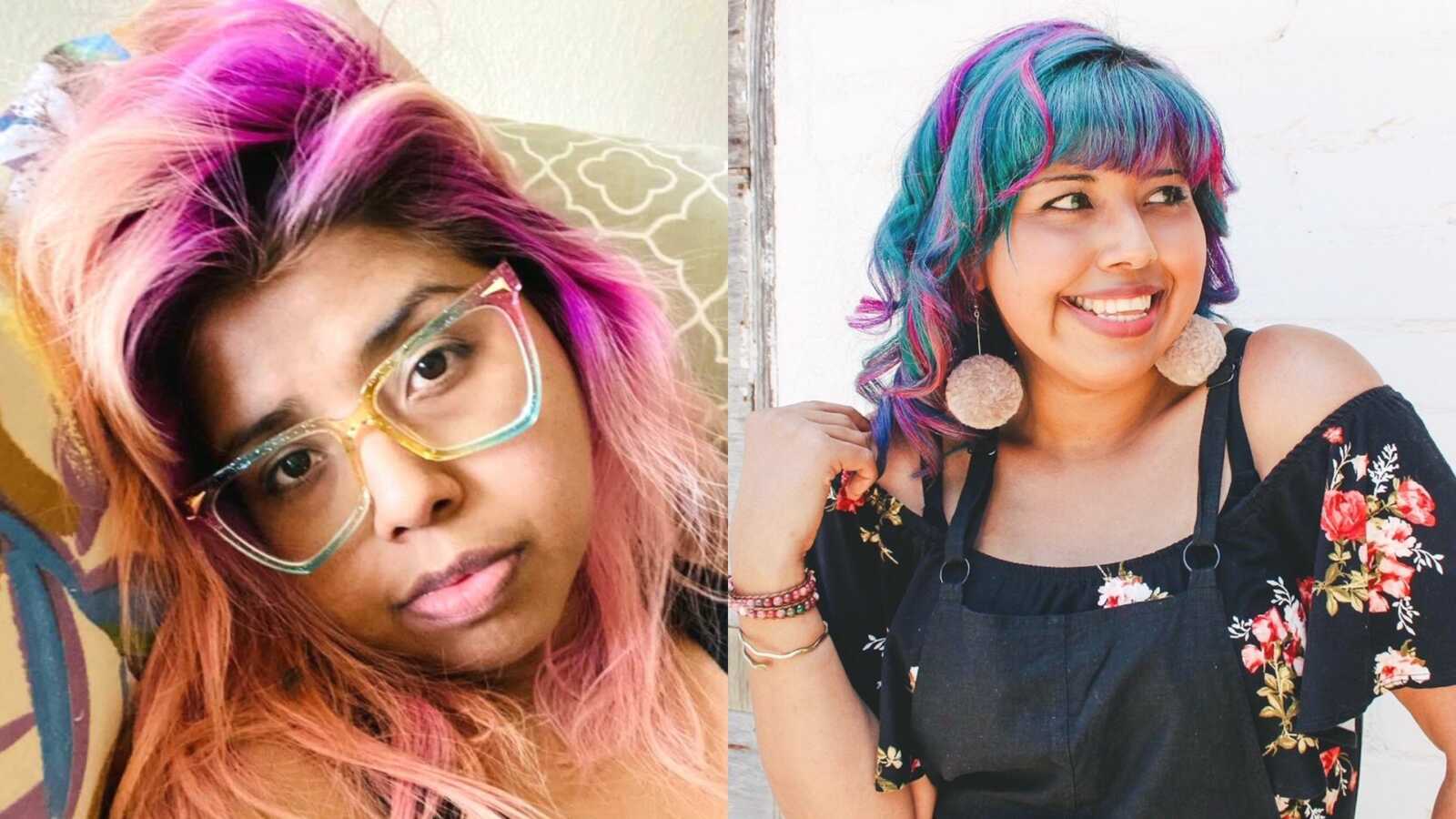“It was a Friday night at the theatre, and I just stuck the landing center-stage as my character entered with a staged tumble, but something didn’t feel right. Did I land wrong? Was I hurt? The spotlight pools around me, and I’m up. I keep going, adrenaline kicks in, and 90 minutes later, curtain.
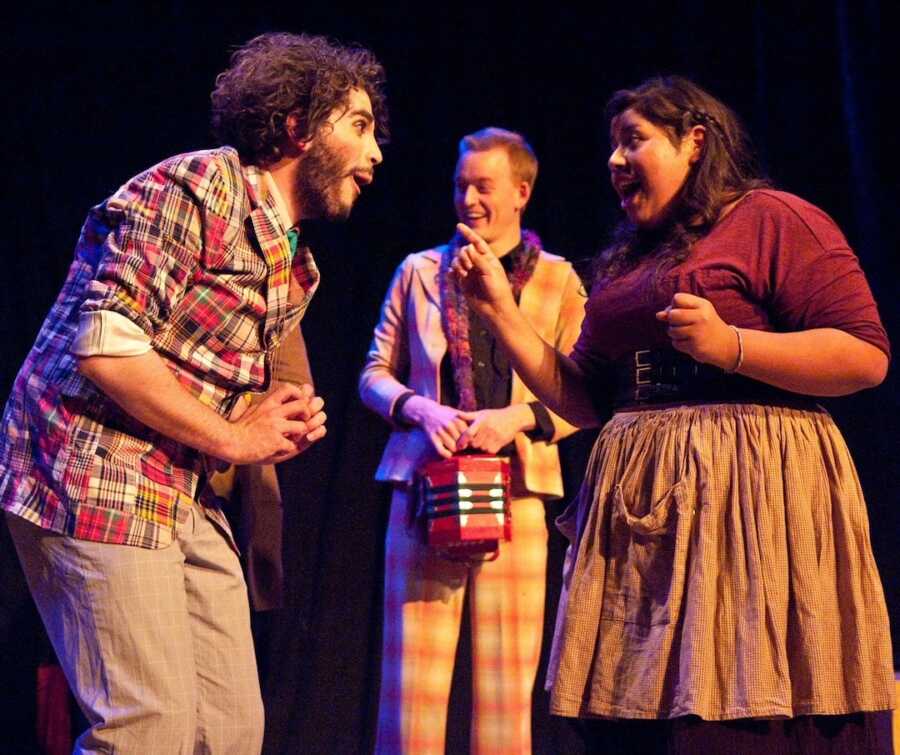
It was the fourth weekend of performances of a six-week run show, and I had just endured what I thought was my second injury of the show.
Later that night as the adrenaline wore off, I realized that I had in fact done something to my knee, which was now swollen, and unable to bend without resistance. I immediately iced it, elevated it, and stayed off it until my call time the next night. Calling off was never an option for me: I had no understudy. I would wear a brace, I would take meds, but the show would go on!
This was live theater after all.

In the months prior, during rehearsals, I remember feeling really out of shape for my role, because of how sore I was, but thinking I’d had more physically demanding roles in the past and never felt this way for this long before. Every morning I was waking up with my body heavily sore and achy as if I had just done some intense full-body workout.
After a while I learned to push past it, after being gaslit by doctors for so many years and always being a bigger girl, I attributed any pain I had to my weight. Already knowing the doctors would tell me the same thing they told me whenever I came in with a sprain, a fracture, or my repeated bronchitis. And that was ‘Exercise more and lose weight,’ never entertaining the thought it might be something else or a potential pattern. So no use in wasting my time and energy there.
So, I got ready to go to the theater for another night of comedy. I let my director and cast know, and we found a way to work my leg wrap into the show; we restaged some scenes, eliminated any stage falls I used to do, and I performed the rest of that weekend with a swollen knee, and tons of adrenaline. By the end of our Sunday performance, I had developed pain in my other knee, my elbow, and my hip. I figured I’d skip classes the next day and just rest, let my body recoup since I basically forced it to run a marathon through pain and injury. Little did I know, it was just the beginning of a completely life-altering chain of events.
Monday morning I wake up in what feels like a hangover haze. My head is heavy and pounding, the light of day hurts my eyes, I’m warm and feel awful, but then a terrifying realization washes over in a cold sweat. I can’t move. I feel almost paralyzed. My entire body feels weighed down like it’s trapped under bags of cement, and any attempt to lift a finger, move my head, free myself from whatever is happening causes excruciating pain. Tears start rolling down my face, and I brace myself for what I know I have to do next. I take a deep breath, push my arm in the direction of my phone, scream as my body registers the pain, and call my mom, who is already at work.
Crying and completely panicked at this point, I let her know what’s happening, and she rushes over to take me to urgent care. As I enter the doctor’s office, there is now a steady stream of tears silently cascading down my face as every step becomes more and more unbearable.

After a brief examination, the doctor holds up my hand and asks,
‘So how long have you had Arthritis?’
‘I’m 21.’ I responded. Both confused and annoyed.
He then holds out my hands and says, ‘Your hands are extremely inflamed, this is a severe case of Arthritis.’
He then prescribed some pain medication and referred me to a Rhumatologist because of my age and unexplained full-body pain. Now normally, it takes months to get an appointment with a specialist like that, but my mom was not about to accept that. Fortunately, at the time, she worked with the medical group we were a part of. She went into Mama Bear mode and went directly to the top of the chain and had some choice words to make sure they got me an appointment that week. And by some miracle, they managed to find one who had a cancellation for that Wednesday!
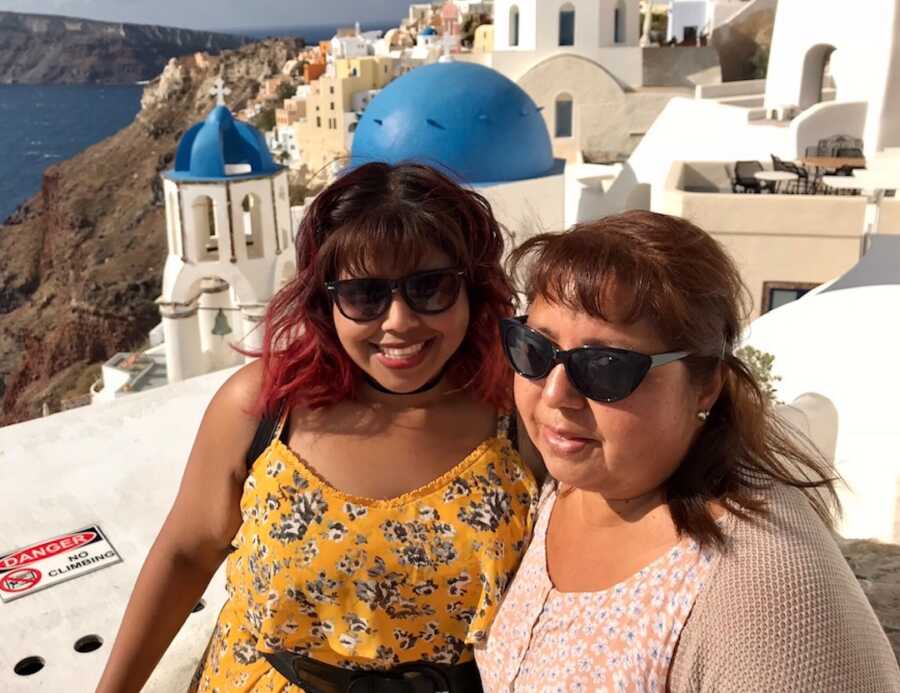
I took that as a good sign. I could lie in bed on painkillers for a day, and hopefully,y this would all be over soon. Right?
I never expected walking into that appointment Wednesday that I would hear this would be forever.
Things and noises start to fade in the background as the doctor is informing my mom and me that it looks like I am in the middle of what’s called a ‘flare,’ and that I may have an Autoimmune disease called Systemic Lupus Erythematosus. He goes on to explain how my immune system that usually fights infections is actually attacking the healthy tissue instead, manifesting in the inflammation and pain throughout my body.
Soon the voices fade too, and I’m staring off, trying to process, trying not to panic. I can’t look at my mom yet: I’ll burst into tears. I go in and out of my thoughts while words pop intermittently from the background.
Overhearing things like ‘no cure,’
—’What’s lupus?’
—’Is it fatal?’
‘Unknown’
—’Is this cancer?’
‘Long term’
—’It’s not cancer?’
‘Treatment’
—’Is that better or worse?’
‘Manageable’
—’What does this mean?’
As my mind fills to the brim with questions, so do my eyes with tears as I feel the drops fall on my hands. which my mom has been holding.
I’m pulled back to the conversation by questions about blood tests and next steps and school, then I suddenly realize: the show!
—’Would I be able to perform on Friday?’
‘In two days?!’
—’Would I be able to perform ever again?’
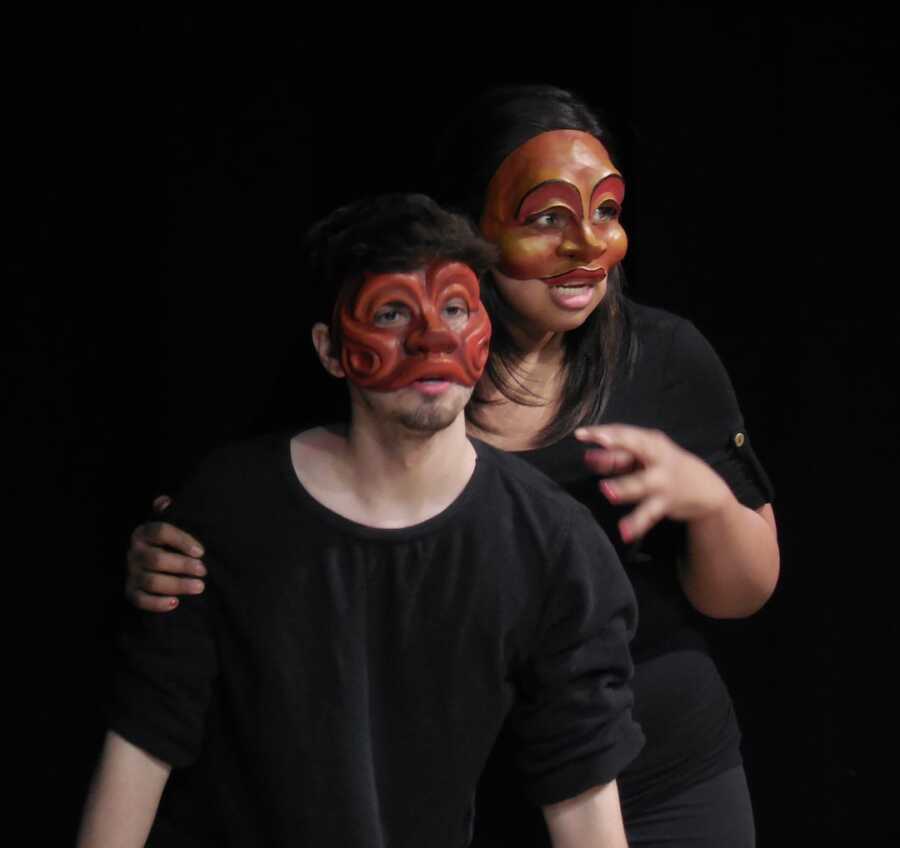
I sat there trying to gather myself to form full sentences again.
While I’m sure it’s not the response he was expecting, I explained my situation and pleaded with the doctor if there was any way I would be able to perform that weekend. I proposed that I would only need to be physically able to perform for exactly 90 minutes for the next two weekends, and I said I would be in bed the entire time every day before and after. Once the show closed, I would take a break and stick to whatever treatment plan after that.
In hindsight, this was probably not the best choice, but I wasn’t ready to accept what this actually meant for me yet, and I needed this, and I think he could tell. So I left with prescriptions for a high dose cocktail mix of painkillers, anti-inflammatories, immunosuppressors, steroids, and other pills for side effects.
I had decided not to tell anyone about my possible diagnosis just yet. The new staging from last weekend would allow me to finish the show. Plus truthfully, I didn’t even know what was really happening. Friday night while getting ready, I could feel the cocktail starting to work when I was finally able to stand up with full weight on my feet without pain for the first time in days.
This would work. And it did, for exactly 90 minutes, no more. As we took our final bow, I could feel my clock running out, as every joint in my body began to ache while the energy drained as I slowly made my way back to the car where my mom had been standing by.
I repeated this process for the next set and closed the show.
Later tests confirmed I did have Systemic Lupus, and it was attacking my joints.
It was spring of 2011, I was 21 and just diagnosed with a long-term, progressive, autoimmune disease. My life had turned upside down before it even began.
As promised, I took some time after that to rest, be sick, process more, and regulate my body on more reasonable doses of medication and treatments.
It was during this time that I also started my struggle with depression. When you’re diagnosed with something that physically takes control of you, a disease that no one really knows anything about, a disease that has no cure and is actively trying to kill you instead of protecting you, everything seems hopeless. I felt like I’d lost everything; my body, my future, the life I envisioned for myself. And at 21 years old, there’s really no easy way of coping or trying to make sense of all of that.
And the thought of never being able to perform again absolutely shattered me. But how could I act or go through classes or rehearsals the way I was? My body was my vessel, my tool; and every move I made was painful.
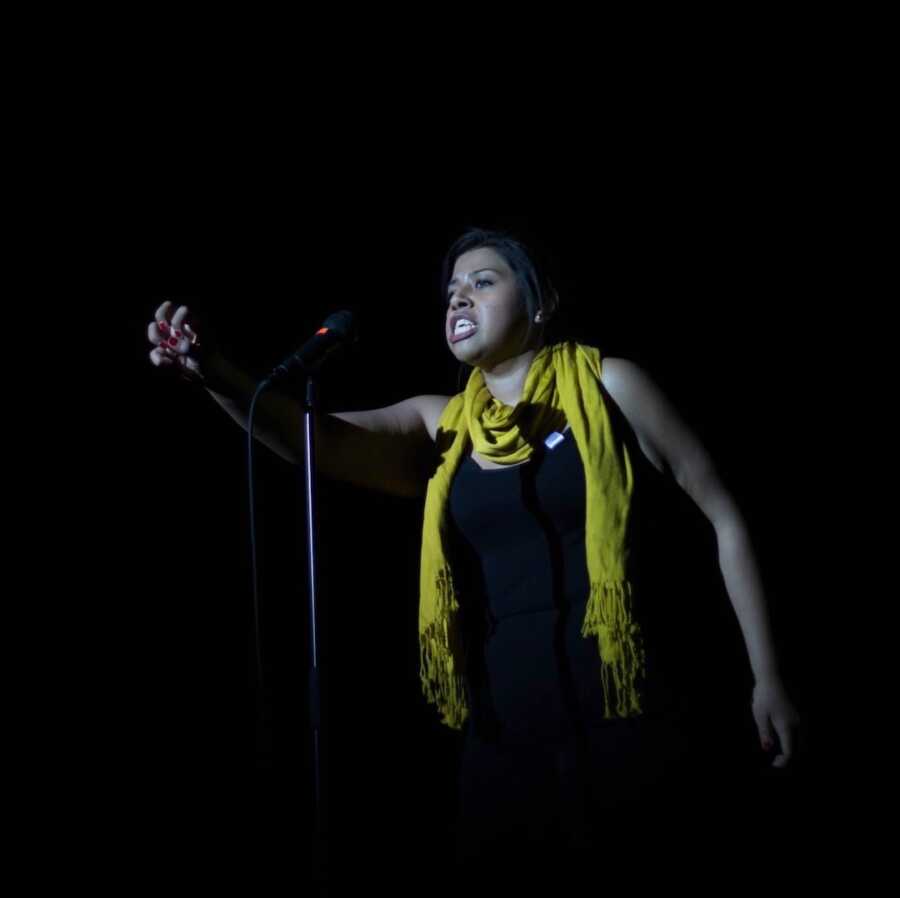
I was the little girl who always knew what she wanted to be. And I actually did it! I started performing when I was 10 and didn’t stop, telling these stories and having the ability to make people laugh or cry or just listen made me feel valued and empowered in my own body. I was hooked, and I wanted to do so much more. This was my purpose, this was my passion.
And after being in college I was excited about the person I was becoming and all the possibilities that came with it. I wasn’t ready to give any of that up. I wasn’t ready to change that life I wanted.
Before I was diagnosed I had applied to a few performance programs, and during my time off I got the acceptance letters. But instead of joy, they just brought more despair. They were rigorous programs, great but challenging. This was the opportunity I wanted, to learn as much as I could of this craft and discover a whole new world of performing. But everything was different, how could I possibly do that now?
My mind was unfocused from pharmaceuticals, my body was unpredictable and overwhelmed by pain and side effects. Plus I’d be throwing myself into a stressful environment with no sleep working towards a career that’s known to be stressful, with long hours and very physical.
All of which are triggers for Lupus flare-ups.
But I kept thinking about the cocktail mix of medications that allowed me to perform as I once did. Instead of being imprisoned in a body that just couldn’t.
I didn’t want to be identified or ruled by this disease. So I chose to simply not accept it.
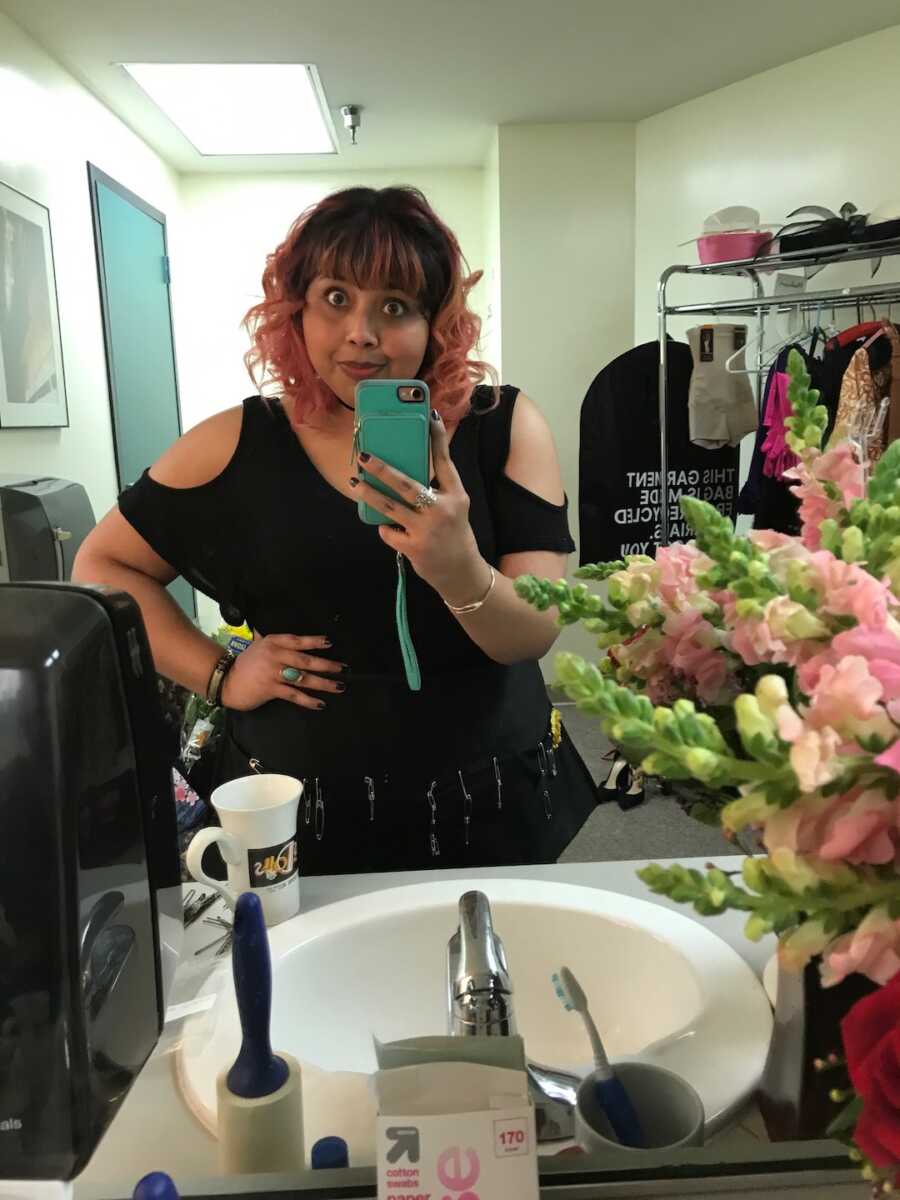
I put my lupus in a box of denial and shoved it away, and was determined to play the role of a ‘healthy person in their 20s’ for as long as I could. I went into this mindset of toxic positivity. I refused to let this disease run my life and I wouldn’t allow myself to be depressed anymore. Just positive thoughts. I was still me, and if I took my daily medication plus the painkillers and inflammatories I’d keep on hand, I could push past this. No one had to know.
I eventually told close friends and family, but because the disease is so unknown and I never looked sick, no one really understood or noticed anyway. But I had my mom, who always knew and understood and has been my best support system to this day.
The blessing and curse of Lupus is that, being an autoimmune disorder, it falls under the umbrella of invisible illnesses. Meaning most of the time there are no visible signs of pain or symptoms. And most of us who live with chronic illnesses learn to push past and continue our daily lives despite suffering chronic symptoms and pain every single day. The curse is we often don’t ‘look sick’ so people don’t believe us anyway.
So for a long time, I compartmentalized my life, mentally and physically. Or rather I tried.
For almost two years I was a college student, I was performing, rehearsing, and trying to be in my 20’s (partying) all while covering up my symptoms with more pills just to survive and actually be able to do it all.
Once again, I could feel my clock running out.

My joints were aching, knee and foot wraps were my new accessories, and flares leaked through performances; the magical pills weren’t working anymore. And as much as I tried to deny it, I couldn’t deny the numbers. My latest bloodwork had come back showing increased levels in my kidneys and liver. All the medications used to treat diseases like Lupus come at a cost, both with side effects and long-term use. It’s strong stuff, but we need it to survive. And by taking as many painkillers and anti-inflammatories as I did every day, I was basically speeding up the process.
So this was it, game over, it was time to accept what I couldn’t before. I needed to make changes, start listening to my body and do some damage control. Which meant no grad school, taking a break from performing, and taking care of myself. I was heartbroken.
I spent the next year completely lost, I didn’t know what I should or even could do. Listening to my body and trying not to stress about finding a job to contribute financially was an impossible balance, one that I still struggle with.
I needed to do something where I wasn’t on my feet all day, something that wasn’t so physically and mentally demanding, and still make a living. I tried to do small theater jobs in between large periods of resting. I started with front-of-house work, then some makeup, and design work, which eventually led me to a new kind of happiness in costuming.
Costuming gave me the closest thrill to actually being on stage that I could get. It allowed me more freedom to pace myself, rest when I could, plus most of the work takes time and usually requires sitting down. It immersed me in all forms of art, gave me the adrenaline, creative outlet, and the opportunity to meet and work with amazing people on exciting projects all while getting paid.
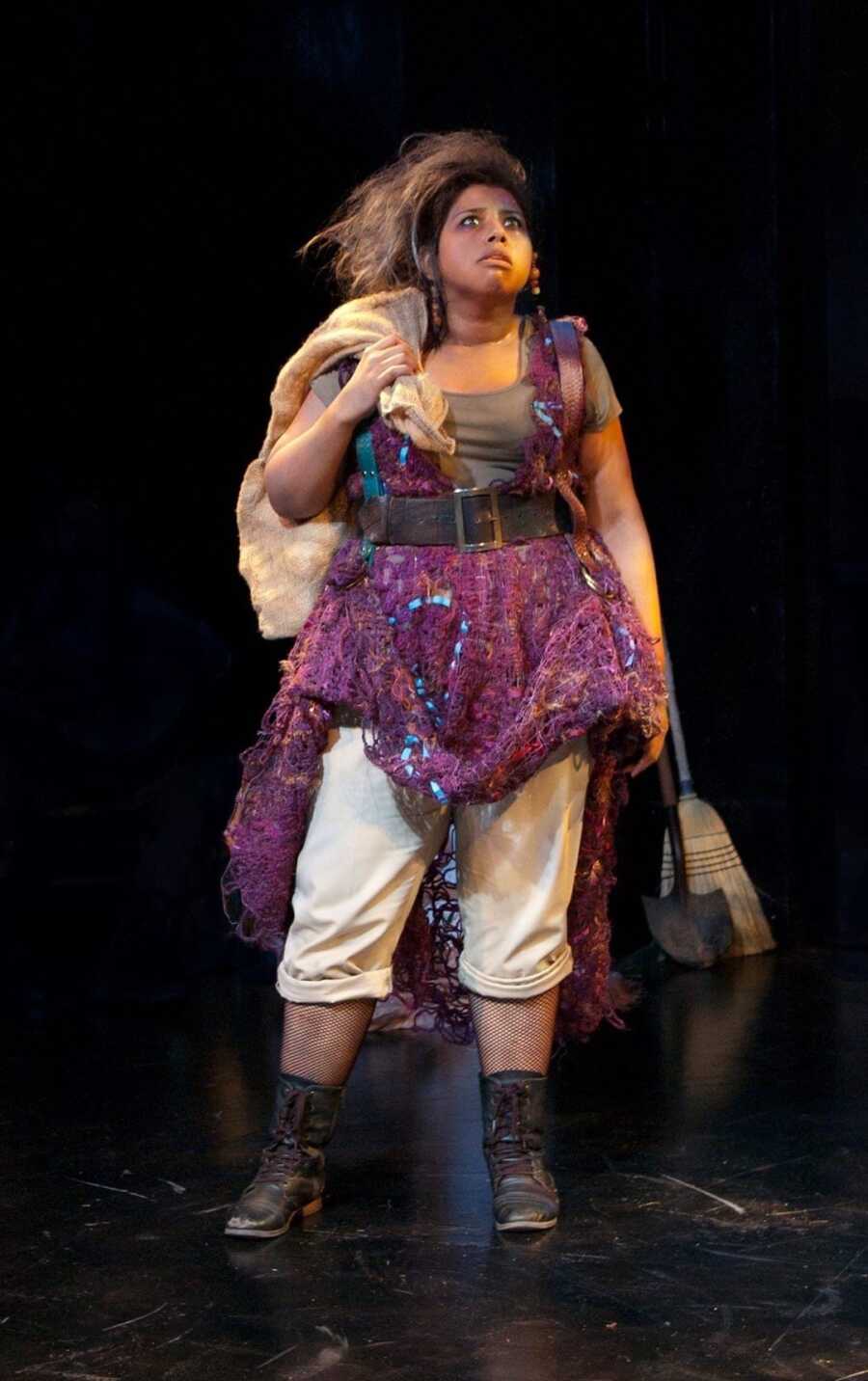
Then in 2015, I started experiencing this crushing pain in my back that would wrap around to my chest whenever I would lie down. I had already been diagnosed with Lupus for four years, so I was used to pain but none of my usual medications did anything for this particular pain, which I thought was just another flare. Then the pain got worse and sharper, sending me to the ER many a night.
Sometimes it would feel like sciatic pain, or maybe I had kidney stones or a herniated disc. The most terrifying time, I thought I was having an actual heart attack.
After months of ERs, doctors, acupuncture, bloodwork, and tests (the wrong ones). The only answers I got were ‘It’s your Lupus’ and a handful of scripts for probably every narcotic you can think of. Until I finally had a meltdown in my doctor’s office, screaming and pleading that I knew my body, and something wasn’t right!
One MRI and two CTs later, it turns out my lungs were severely inflamed and under attack. The lupus had spread to my organs, starting with my lungs. And I was finally diagnosed with ‘Shrinking Lung Syndrome.’
(Yes, it’s a thing)
It had been months of this pain and flare gone rampant, so at this point, I was at a capacity of around 47% and in real danger of losing more than half my lung capacity and staying that way. So they quadrupled my prednisone to put out the immediate fire (that they created) and added another fun medication and breathing tests every three months.
This was a turning point for me, the trauma of almost losing my lungs opened my eyes to the reality of this disease, and the unpredictability and uncertainty of my future with this body and my health. From then on, I tried to lead my life with happiness and appreciation. I was going to see as much of this world and experience as much as I could, while I could. I didn’t want my entire life to be in a bed. I wasn’t going to take anything for granted, I was going to live the life I was given to the fullest.
After a while, my symptoms regulated and became more manageable, and I hadn’t had any major flares; even some of my medication doses were able to be lowered. I was in what the doctors called, a ‘cautious remission’ for a few years. During this time, my mom and I started our adventures traveling around the world! We would save, budget, and choose a different place on our bucket lists every year. We knew these moments were precious, and we were going to take advantage of our time. After a while, in between traveling, I took on more responsibility, got a new job to juggle, and moved into a dream apartment with a friend.
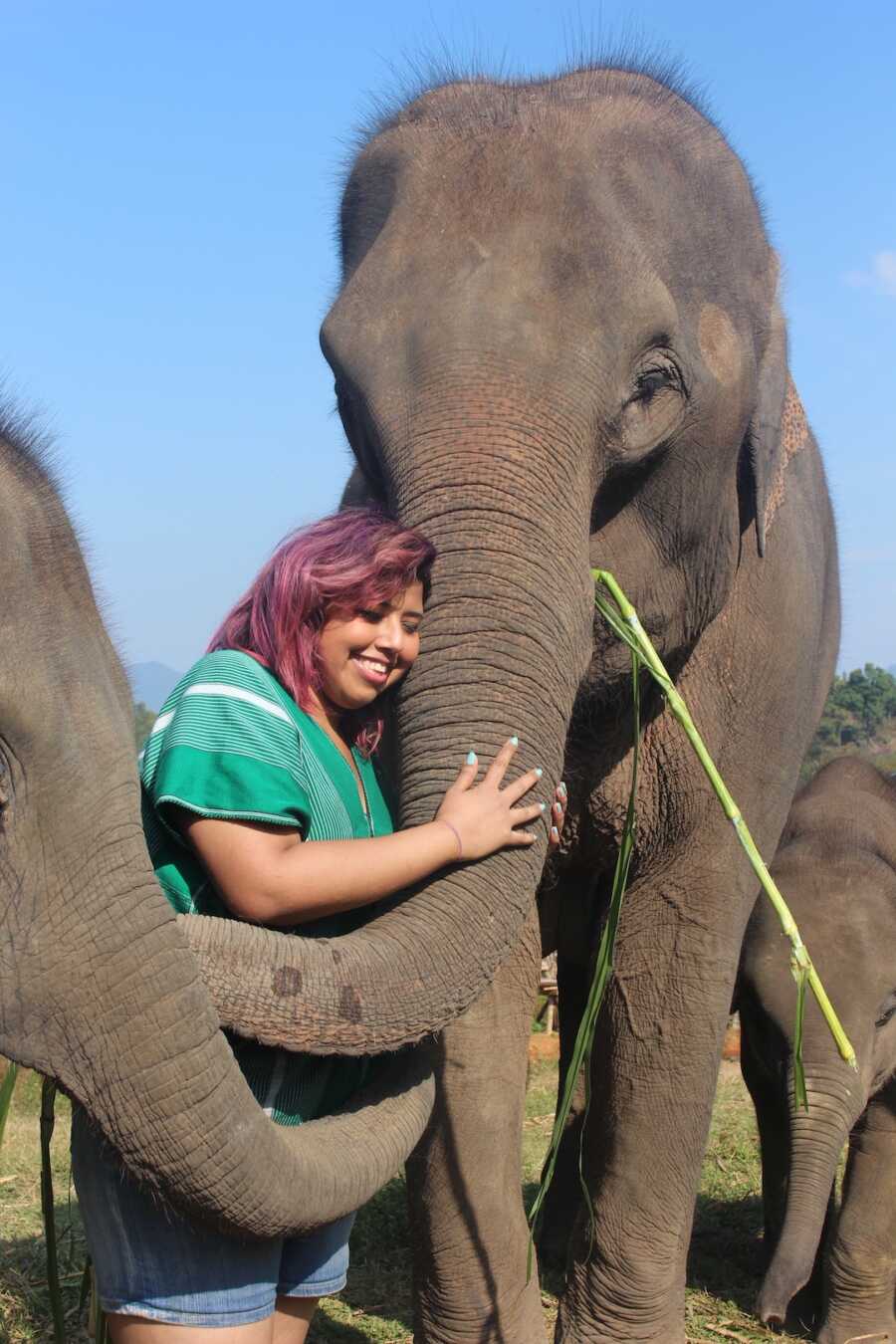
Things were good.
Then the pandemic hit.
After losing my jobs because of the shutdown, the pandemic also kicked some of the worst parts of my disease into high gear. The stress of being at high risk for the virus brought on stronger symptoms, longer flares, and degeneration in my joints leading to severe Arthritis in my hands. And a series of new surgical injuries, including possible knee surgery for a torn ACL. Plus the intense isolation and treatment from people during the pandemic brought many mental health issues to the surface.
Along with the serious dangers of returning to work in this Covid world, it’s also proving to be physically challenging. A large part of my job relies on the use of my hands, and with certain deformities and nerve damage, control is becoming an issue.
I can’t work because I’m too sick, and I get sicker because I stress about not being able to work.
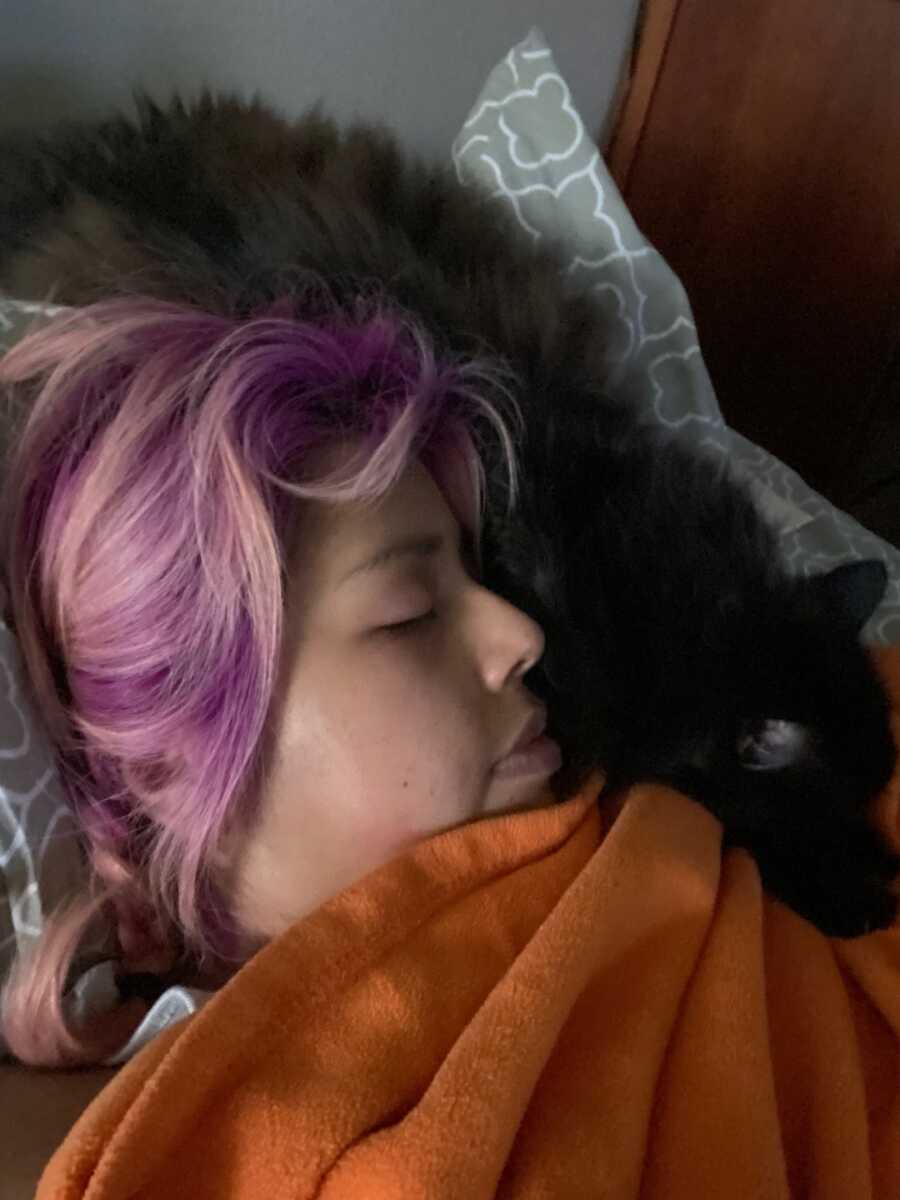
Between the physical therapy for my knee, occupational therapy for my hands, chiropractic appointments, plus the pain and symptoms, it’s an accomplishment getting out of bed and trying to do anything at all.
The problem is that being sick is astronomically expensive in this country! Putting aside the medical bills alone, there are therapies, other specialists and treatments, special diets, self-care needs, medicines, pain management products, and adaptive equipment. Plus all those fun surprise ER visits. All of which come out of our own pockets because the healthcare system is a joke. It’s been estimated that it costs roughly $86 billion a year to have an autoimmune disease like SLE Lupus.
And since unemployment has ended, I’m running out of resources and money fast. So it’s looking like my only choice for income is disability. Unfortunately, all they see is my age, and according to the government I’m ‘too young’ to be this sick (a phrase I’m all too familiar with) but ‘young enough to adapt to different work.’ Because of my age, I was already denied once, so my only prayer for survival is with the help of a lawyer.
It’s expensive trying to survive in a body that wants to destroy you.
But like everything in my life, I will continue to fight because I have to, that’s who I am.
I’m a Lupus warrior.
This past year forced me to confront a part of myself I had been running away from for a long time.
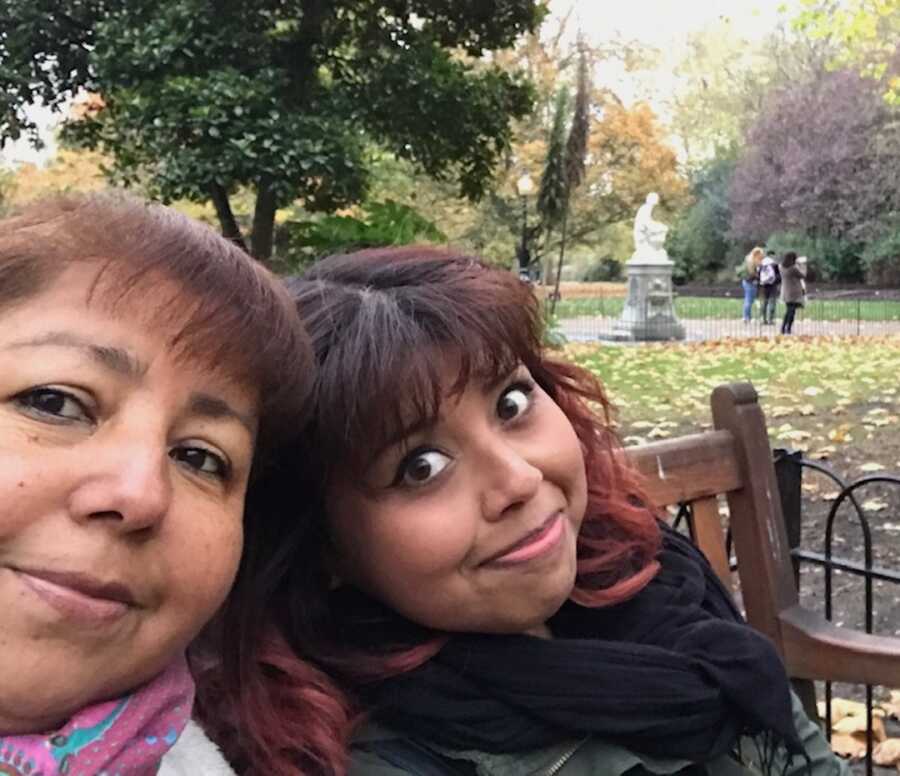
Before the pandemic, not many knew I had an autoimmune disease. Which was the point for many years. I never wanted my life to be my illness. I didn’t want my identity to be my disease. I never wanted people to see that before they saw who I really was or what I could really do or be.
Lupus has affected my life in every possible way, but I’m learning to accept that I can only do what my body allows me to do. And learning to love myself with Lupus and all that it can do for me instead of what it can’t.
I’ve started living more authentically with myself and the people around me, by sharing my journey.
Now not only has my support system grown, but I’ve also started advocating for myself and others by bringing awareness to the invisible through social media.
So I hope that you’ll join me on the journey or share it with others you think may need it.”
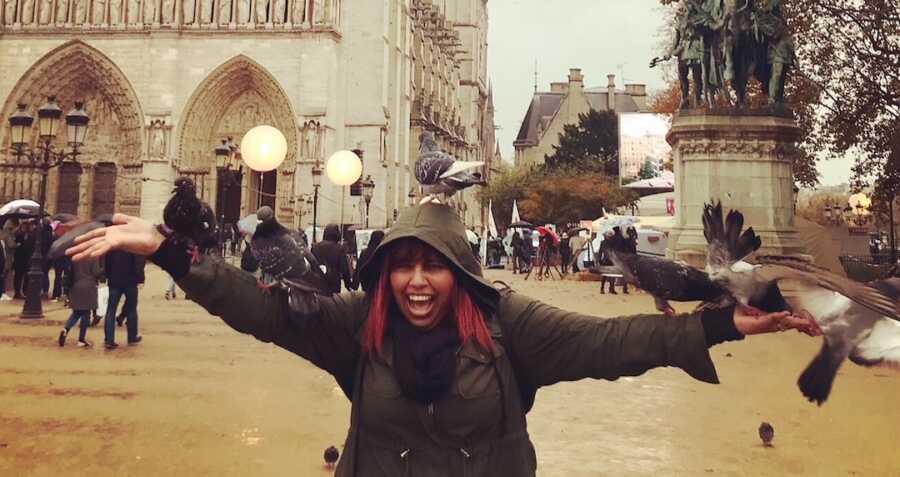
This story was submitted to Love What Matters by Ashley Bravo. You can follow her journey on Instagram and TikTok. Donate to her legal fund on Venmo: ABravobravo. Submit your own story here and be sure to subscribe to our free email newsletter for our best stories, and YouTube for our best videos.
Read more stories like this here:
SHARE this story on Facebook or Twitter if you know someone who may benefit from this story.

